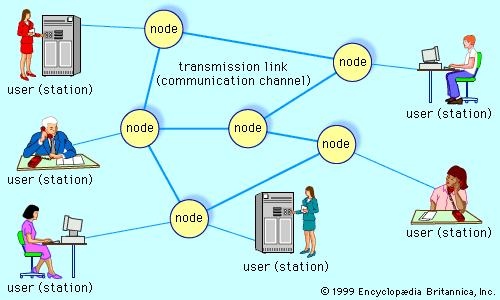Amid shifting viewer habits and the rise of streaming platforms, traditional broadcast networks are facing unprecedented challenges, signaling a profound transformation in the media landscape. Recent ratings declines and advertising shortfalls highlight the difficulties long-dominant broadcasters encounter as audiences increasingly turn to digital alternatives. This evolving environment underscores the urgency for legacy networks to adapt or risk obsolescence in a rapidly changing industry.
Broadcast Networks Face Declining Viewership as Streaming Gains Momentum
Traditional broadcast networks are experiencing a notable slump in audience numbers as viewers increasingly gravitate towards streaming platforms. Factors such as on-demand content, personalized viewing experiences, and expansive content libraries offer consumers alternatives that broadcast schedules struggle to match. Networks that once commanded vast prime-time audiences now face fragmented viewers who prefer the convenience of binge-watching and ad-free options found on digital services.
Industry analysts highlight several key challenges contributing to this shift:
- Changing consumer habits: Viewers prioritize flexibility over fixed programming slots.
- Younger demographics: Millennials and Gen Z show strong preferences for streaming platforms.
- Advertising reallocations: Brands follow audiences, diverting spend to digital channels.
- Content innovation: Streaming services invest heavily in original programming.
| Network | Prime-Time Viewership (Millions) | Year-over-Year Decline |
|---|---|---|
| ABC | 5.2 | 12% |
| CBS | 6.0 | 10% |
| NBC | 4.8 | 15% |
Adapting to the Digital Shift Strategies for Broadcast Networks to Regain Audience Trust
Broadcast networks have encountered increasing challenges as audiences migrate to digital platforms offering personalized and on-demand content. To navigate this shift, networks must prioritize transparency and strengthen their commitment to journalistic integrity. Rebuilding trust involves not only delivering accurate news swiftly but also engaging viewers through interactive digital experiences. By adopting multi-platform strategies, networks can create compelling narratives that resonate with a fragmented audience and foster loyal communities.
Key strategies to regain audience trust include:
- Investing in digital infrastructure to ensure seamless streaming and mobile accessibility.
- Enhancing social media presence to facilitate real-time dialogue and feedback.
- Implementing fact-checking initiatives to combat misinformation and reinforce credibility.
- Expanding localized content to connect with diverse demographic segments.
| Strategy | Expected Impact | Timeline |
|---|---|---|
| Mobile-first platform redesign | Improved user engagement | 6-9 months |
| Fact-checking automation tools | Stronger credibility | 3-6 months |
| Community forums integration | Audience loyalty growth | 12 months |
Investing in Original Content and Interactive Platforms Key to Navigating Media Disruption
Broadcast networks face mounting challenges as consumer preferences evolve rapidly, pushing traditional media to rethink their approach. A critical strategy emerging from industry leaders is the pivot towards developing original content that cannot be replicated by streaming giants or social platforms. This original programming not only serves to differentiate networks but also builds loyal audience communities that advertisers find attractive. Simultaneously, there is a growing emphasis on interactive platforms which engage viewers beyond passive consumption, offering real-time participation, personalization, and a more immersive experience that traditional broadcasts have struggled to achieve.
The necessity of this dual investment is underscored by recent audience behavior analytics, which highlight the swift migration to digital and on-demand consumption models. Networks adopting a hybrid model of unique content combined with innovative technologies are better positioned to capture fragmented viewers. This trend fosters new revenue opportunities, from subscription tiers to branded partnerships that leverage user data and interaction metrics. Below is a summary of key focus areas for broadcast networks adapting to media disruption:
| Focus Area | Impact | Primary Benefit |
|---|---|---|
| Original Content | Increased Audience Loyalty | Brand Differentiation |
| Interactive Platforms | Higher Engagement Rates | Monetization via Data Insights |
| Multi-Platform Distribution | Expanded Reach | Broader Ad Revenue |
- Content exclusivity: Creating shows and formats only available on network platforms.
- User interactivity: Features like live polls, chatrooms, and choose-your-own-adventure storylines.
- Cross-platform integration: Seamlessly connecting broadcast, digital, and mobile experiences.
Future Outlook
As broadcast networks navigate these challenging times, their struggles underscore a broader shift within the media landscape. With audiences increasingly turning to digital platforms and on-demand content, traditional television faces mounting pressure to adapt and innovate. The coming years will likely prove critical for these networks as they seek new strategies to remain relevant in a rapidly evolving industry.
